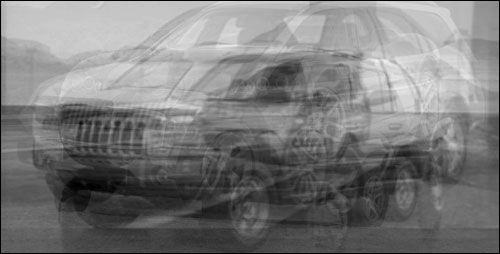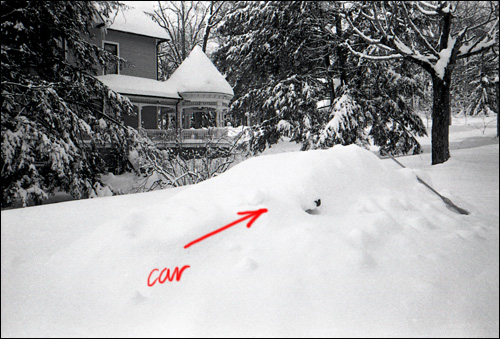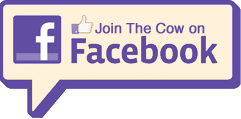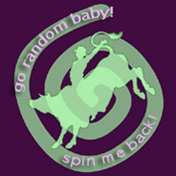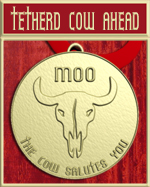For quite some years I made a very good living by writing music for advertising. That period of my life is pretty much over now for a number of reasons, and since it’s unlikely that I’m going to ever reclaim my glory days helping to sell shampoo and cars, I figured I might as well start a series based on my exploits in what must rank as one of the most pretentious, overpaid, frustrating, lunatic-filled businesses on the planet. It’s not like it will matter much if I offend anyone anymore. So without further ado:
The Reverend’s Adventures in Advertising, Episode 1.
I thought I’d kick off these reminiscences with a story about a campaign for which I was asked to apply my creative genius to the promotion of a lesser-known, but quality brand of Australian cheese.
My usual procedure for accepting a commission ((For that’s what it was in those days – a commission. Jobs were awarded on merit and talent, and advertising agencies actually sought out creative people based on their reputation. That concept, in Australia at least, has become a thing of the past, and is one of the reasons that I’ve moved on.)) was to ask for a copy of the script, and if I thought I could do anything with the idea, I’d take it on. I turned down a lot of work. This particular spot was not something that was in my usual field of interest, but it did have a certain Monty Pythonesque je ne c’est quoi and I figured it could be amusing, so I agreed to give it a go. This was the pitch, as kooky as it seems:

A farmer is leading his cow off to pasture. We hear bucolic country sounds and pastoral music. Suddenly there is a clap of thunder and the surprised farmer turns to see the clouds parting and the Hand of God reaching down into his barn, from whence it retrieves an enormous block of Brand X Cheese. An angelic choir sings! The farmer watches in awe as we hear a booming voice-over proclaim “Brand X! The Chosen Cheese!” ((I kid you not. I totally swear I’m not making an ounce of this up.)) The angels swell into an uplifting coda.
Kinda cheesy, I’ll agree, but sometimes these nutty ideas, if done with enough aplomb, turn out OK. And besides, the money was pretty good.
Now I need you to understand that this is not just the pitch that went to me, but was also the script that the client (I immediately dubbed him The Big Cheese) had already received and approved (generally, by the time I was called into a job, the ad had been completed except for the sound and music and the final visual effects. This spot was no exception).
A few days later the edited images turned up, and I was relieved to see that they were passable, as far as these things go. After a brief phone discussion with the ad’s Creative ((This has to be one of the most duplicitous job descriptions in existence. In my experience, advertising Creative Directors seldom know their asses from their elbows when it comes to any level of actual creativity. Mostly they are pop-culture sponges who suck ideas out of other, better pieces of work and re-tool them (usually badly) to fit their own agendas.)) Director, Phil, ((For reasons that are obvious, the names of the products and personnel involved in these escapades will remain anonymous. I don’t really care if you infer any of the details, but knowing the litigious tendencies of this business, I don’t aim to get myself sued…)) I set to work whipping up a convincing chorus of angels, shimmering with heavenly harp arpeggios. This sort of work is actually a lot of fun. It’s not like you can be too over the top with a concept like this and !!!B-R-I-I-I-I-I-I-N-N-N-G-G!!!… I’d only been at it for two hours and Phil was already on the phone.
“Um… mate… [everyone in advertising calls everyone else mate]. Mate, looks like we have a tiny bit of a problem”.
“Oh? How so?” I ask, a feeling of dread settling upon me.
“Er, well,” says Phil, “The client is not too happy about the religious connotations of the spot”.
“You what?” I say.
“Yeah, they think it’s a bit Christian“.
Now this is one of those moments in which the universe suddenly ceases to make any sort of sense whatsoever. Personally, I thought the ad might have been straying a little on the Jewish side, with the ‘chosen’ cheese & all, but it’s a joke, right – you’re not meant to think too much about it. But it was the general overall religious aspect that Phil said the Big Cheese was having problems with, as astonishing as that seemed to be at this point in the proceedings.
Now it’s pretty clear to me that when your concept takes on quite this much water, you simply cut your losses, scuttle the ship and head for the lifeboats. But what’s this? Quite unbelievably, Phil was still bailing…
“So what we want to do now is try and make it less religious…”
My brain went into a mode which I imagine is very similar to how Robby the Robot feels when he’s given an order to harm a human.
“But it’s GOD!” I say. “It’s GOD’S HAND reaching from HEAVEN. How the crap do we make that less religious?”
“Well, OK… we’re considering the idea of making the hand a little sooty with a bit of digital work, and with the help of some Wagner-style music, turning it into the hand of Thor, the God of Thunder! How do you think that would work?
Well I thought it would be about as successful as putting fishnet stockings on a pig and attempting to pass it off as Dita Von Teese, but I remained stuck for words. Further, it dawned on me that the the whole sink-or-swim for this spot had somehow been deftly passed right down the line to me. If the ad failed, well then, it would be my fault! And this was not to dwell for even a nanosecond on how the whole shebang had managed to get this far without the Big Cheese making at least some little squeak about his unhappiness with the religious tone of the whole affair. It’s not like they were hiding it from him!
Phil then went on to say that there was no intention, not even the merest suggestion, of altering the tag line ‘The Chosen Cheese’. This was most definitely not to be touched. It had been sold through to the client as the catchphrase for the whole campaign. Are you with me here, as I try to comprehend the inscrutable insecty thought processes of the Advertising Hive Mind?
So, in the next few hours, after a short break taken up mostly by uncontrolled alternate fits of sobbing and laughing, I found myself wheeling out the French horn and crash cymbal samples and vainly attempting to conjure Das Rheingold. It didn’t work terribly well. Now God simply looked like an interloper at a bad Salvation Army Band fundraiser. I considered phoning Phil and suggesting they have the hand take out a giant box of crackers and a plate of lamingtons as well. It certainly couldn’t have made things any worse.
After a few days, the digital image amendments had been completed and Phil, and all the other hangers-on that an advertising campaign seems to involve, turned up to take a look at what I’d done with the music.
“Hey, that’s not too bad!” he exclaims. “It says Thor, the God of Thunder for sure! What do you reckon, mate?”
Now I hate it when advertising people ask for your opinion, because you can be sure that the one thing they never really want to hear is your actual opinion.
“Sure,” I say, crossing my fingers behind my back. “Sure, everyone will think it’s Thor, the God of Thunder. You guys have done amazing things with the digital work. Unmistakeably the Thor of the Norse Pantheon. Only an idiot wouldn’t get that!”
All the while I was imagining the cheque for my fee fluttering like a tired homing pigeon into my bank account, and the numbers clocking up like the meter on a Sydney taxi heading off along the Eyre Highway.
They eventually did put the ad to air, much to my complete amazement. Evidently the Big Cheese had forked out so much money he needed to explain to someone where it all went. A few days later my mother, who knew nothing at all of the above debacle – only that I’d written the music on a Brand X Cheese ad – called to say she had seen ‘my’ ad on air.
“It was really good!” she said, in the way that faithful mums show their undiscriminating devotion, “But there’s one thing I don’t understand – why was God’s hand so dirty?”
